

Main Street U.S.A. in Disneyland was Walt Disney’s pride and joy … a window into his life as a young boy growing up in Marceline, Missouri, in the early 1900s.
According to Disney historian Dave Smith, Walt’s plan for Disneyland’s Main Street “was to present an idealized town at the turn of the [20th] century. Such a town never really existed, but if guests were to conjure up their ideal town, it would be something like Main Street U.S.A.”
In the minds of many of Walt’s trusted lieutenants, including John Hench, Main Street also was much like the opening scene of a movie, drawing guests into “the show” with the promise that what was ahead, beyond the quaint shops and themed restaurants, were areas “threaded with adventure, romance, thrill and fantasy.”
Since Disneyland’s opening in 1955, every designer who has been tasked with creating a new Main Street for a new Disney park has had to live up to that first nostalgic thoroughfare, the only one Walt actually had a hand in designing, watched being built and experienced first-hand for more than a decade before his death in 1966.
Imagine, then, being given the daunting assignment of designing a Main Street U.S.A. for a new Disney theme park.
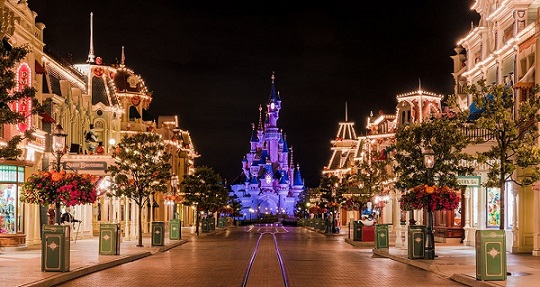
That’s what Eddie Sotto was faced with when he was hired by Tony Baxter during the early design phases of Disneyland Paris, which is located in Marne-la-Vallee, France. On April 12, Disneyland Paris celebrated its 25th anniversary.
On going to work for Walt Disney Imagineering, Sotto said in a recent interview: “I was working in Baltimore at the time and had lunch with Bruce Gordon, who was Tony’s No. 2 man. I showed him this project I was working on that had images in it that were very Victorian, very 19th century. Kind of Jules Verne-inspired, with submarines and lots of sets.
“Tony really took to it. He thought it was really neat, as far as the design was concerned. So when he was thinking of Disneyland Paris, he hired me directly out of that. I didn’t have to work out of the model shop, didn’t have to pay those dues [at Walt Disney Imagineering]. I was named a vice president, which is relatively rare, especially at my age. It was very exciting.”
When the assignments for the park’s different lands were handed out, “I thought I was gonna get Discoveryland, because of the submarines and things I had shown them,” Sotto said. “Tim Delaney justifiably got that and I ended up with Main Street.”
Chronologically speaking, Sotto was asked to design the fourth Main Street in the Disney theme parks’ catalogue, after Disneyland, Walt Disney World and Tokyo Disneyland, but the first on European soil, which was a challenge unto itself. Once given the assignment, the question facing Sotto was: “Do we change things up or stay with a tried-and-true formula?”
“It was always was going to be a Disney-themed Main Street of one type or another,” he said. “We explored turning the clock ahead, somewhere in the 1920s, something that Europeans might relate to more. We thought about that for about a year, but that idea was rejected and we went back to kind of a Walt Disney World base.”

Designing Disneyland Paris’ Main Street had its own unique challenges, not the least of which was weather. Paris, in fact, has a rainy, often chilly climate.
“There was a time when the company thought about some type of covering [for DLP’s Main Street] like they have in Tokyo Disneyland, but we talked them out of that and switched that protective covering to behind Main Street with the arcades.”
The arcades – one called Liberty and the other Discovery – are long, heavily-themed hallways located behind the shops along Main Street. They add a unique and practical element to the overall design of Main Street in Disneyland Paris: They protect guests from the elements and they assist in traffic flow, particularly in the evening, after the nightly fireworks shows. Plus, they are an attraction unto themselves.
“When we designed the arcades, the president of the company at the time, Frank Wells, was adamant about making the arcades really beautiful … making it just as nice an experience to walk there as it would be walking down Main Street itself,” Sotto said.

For the Discovery Arcade, which leads guests from the main gate to the Discoveryland section of the park, “We put on display real patent bottles from the U.S. patent office that a collector lent to us. We wanted people to see real inventions from the 19th century. We also used murals and posters of what people envisioned American cities to look like in the future.”
The Liberty Arcade, which leads to Frontierland, is an homage to the construction of the Statue of Liberty, as well as to the entire immigrant experience. “Each arcade was an intellectual show or pre-show for each land they led to, so they would make sense in their own way,” Sotto said. “They are exclusive to Disneyland Paris.”
The overall philosophy of Main Street in Disneyland Paris pays tribute to Walt Disney.
“Preserving Walt’s memory kind of drove the thinking behind many of the concepts on Main Street,” Sotto said. “Walt Disney as a brand is very well-known throughout the world. And the films are well-known. If you look at Main Street in Disneyland, it initially was kind of based on the nostalgia Walt had for his own hometown on Marceline, Missouri. The sort of idea of the little town that was transitioning from no electricity to automobiles. It was about America at the time, kind of growing up a little bit.”
So you have stores named after Walt’s wife [Lilly’s] and his mother [Flora’s]. There’s a faux gas station [Main Street Motors] and there’s also Walt’s, an American-themed restaurant that has a Club 33 vibe, but is open to the general public.
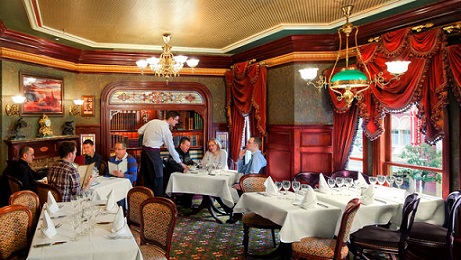
“I thought Walt’s restaurant on Main Street should be something that would tell the story of Walt Disney, the man, vs. Walt Disney, the corporation. The ground floor is about Walt Disney’s beginnings, pictures of his home town, kind of connecting him to the culture of Main Street and the steam trains. The second floor shows him photographically, through the success of Mickey Mouse.
Was it intentional to make Walt’s look and feel like the legendary Club 33 in Disneyland?
“Completely,” Sotto said. “The thinking was, ‘Why can’t people who don’t have a membership get the experience like Club 33? Why can’t you watch a parade, especially if it’s raining, from a beautiful window looking down on Main Street? The elevator in Walt’s is a definite reference to Club 33, and as a matter of fact, the initials of Walt Disney, the WD on the railings of New Orleans Square where his apartment was to be, are on the doors of the elevator, they’re on every gas light sconce, they’re in the furniture … so those WD initials from his first apartment are filtered secretly through that restaurant.”
Sotto also had a hand in designing another signature element at Disneyland Paris … the Disneyland Hotel, which was a Disney Parks first in that a hotel was located at the main gate.
“Initially, for weather protection, we designed a gigantic roof structure to cover the people waiting in line to buy tickets. But it was very expensive. So I made the structure look almost like the del Coronado Hotel in San Diego, which was almost the reference for the Grand Floridian. But that was too expensive.

“So I said, ‘Why don’t we put hotel suites, just a few, on a second floor above it and people could stay there? They liked that idea. One of the people on the Disney Board, Gary Wilson, from Marriott, decided to take the notion of a few suites and turn it into hundreds of rooms. I believe we did studies at the time that the hotel could be extended to the second stories of the stores on Main Street, and the hallways could lead into the park. We didn’t go that far with it, though.
“You have to give Tony Baxter credit. He was the senior vice president at the time and really fought the operations folks, who were dead set against the idea if this hotel, and convince them it was a great idea. And [then chairman and CEO] Michael Eisner really loved the idea, too. I even have a memo from Michael congratulating both Tony and I about never giving up on the idea of a hotel and fighting everyone to make it happen. But I give Tony all the credit for that.”
Sotto was the point man for another Disneyland Paris attraction and another Disney Parks staple: The steam trains.
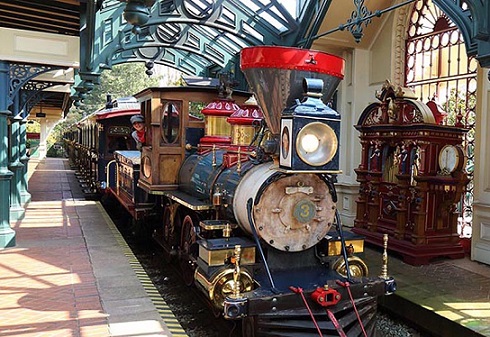
“The Disneyland Paris trains were built in Wales, England, and they were all based on the blueprints of the No. 1 Disneyland steam train, which was the C.K. Holiday. We took that basic design and then cosmetically changed it several times because we only built three trains when we opened the park [a fourth was added] and we did three different trains out of one. The boiler is the same, but the cabs are different. We had guys in the shops who were rail fanatics, and I’m a rail nut. We said, ‘Let’s make this something a purest would love. If you’re from Europe and you love trains, you’ll be able to see these American trains. They are kind of historically inspired, so we went to the Sacramento Rail Museum to get really the most beautiful and unexpected color schemes and so each locomotive has a true story behind it.”
Each of the four trains used in Disneyland Paris have an embracing theme.
“The George Washington has a France-America connection,” Sotto said. “It’s is based on the Revolutionary War and has a red, white and blue color scheme. The W.F. Cody [named for Buffalo Bill Cody] is a Western train with Denver and Rio Grande gold and green. There are antlers on the headlamp.
“The C.K. Holiday is based on the East Coast trains which the trolley companies would build to take people to Coney Island and Atlantic City and other popular East Coast towns.” The last of the four trains, the Eureka, celebrates the California Gold Rush of 1849 [“Eureka is Greek for ‘I found it!'” Sotto noted].
“If you look at the coaches, they all have the names of cities from those places, so if you look at them closely, there’s some depth there. You get some history there.
“Herbert Ryman, a gentleman I had the privilege to work with, said, ‘Bad taste costs no more,’ meaning it’s just as expensive to do something that’s well-researched and has some depth to it than it is to do something with no meaning whatsoever,’ so we tried to put a lot of meaning into” the trains’ designs.
Sotto also designed the Main Street train station and even supplied the voice of the train’s conductor.
“It was kind of a first-time thing, doing the voice of the conductor. As a kid, I spent time practicing doing different voices, things like soundalikes of the attractions. It’s easy to cast yourself when you’re controlling the project. It was kind of an honor and a privilege to be the railroad conductor voice.
“Each land designer had his own responsibility. We all knew each other and all consulted with one another. It was very collaborative effort.”
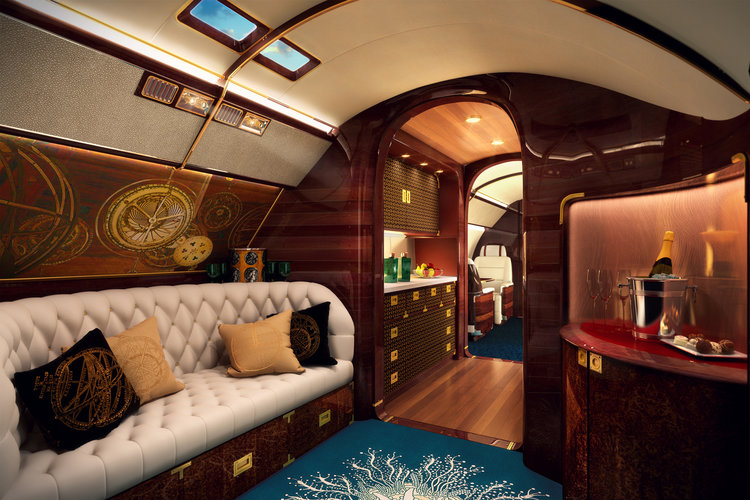
Sotto left Walt Disney Imagineering in 1999 [not before working on several other noteworthy projects, including the short-lived Pal Mickey interactive plush] and formed his own experiential design firm, Sotto Studios.
“When I left Disney I went out to take what I learned about experiential design, working from emotion backwards, working on what the design should be. After working there for so long, I tried to analyze what was so different about working for Disney. Who thinks of it the way we experience it? Which means you walk in a room, your body is absorbing all of these things, the sound and the temperature in real time and you’re making an opinion about it in real time, collective opinions.
“So my thought was, if you could manage all of these collective senses and at least think about the project holistically, and then have the architect come in and guide it like an Imagineer would, you’d have a much more emotional project. So that’s what we started with the company … you’d start with WOW! and then go backwards to what the design should be.
“This has led to everything from restaurants to technology, even a new aircraft, which is literally like going back in time … like being inside the Chrysler Building in New York or the Queen Mary. It’s a 1939-themed private airplane. We do a lot of just fun projects.”



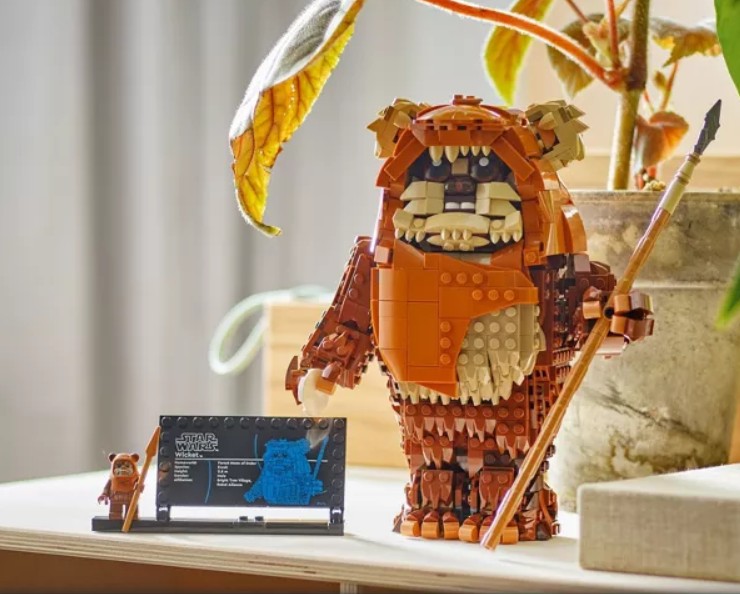
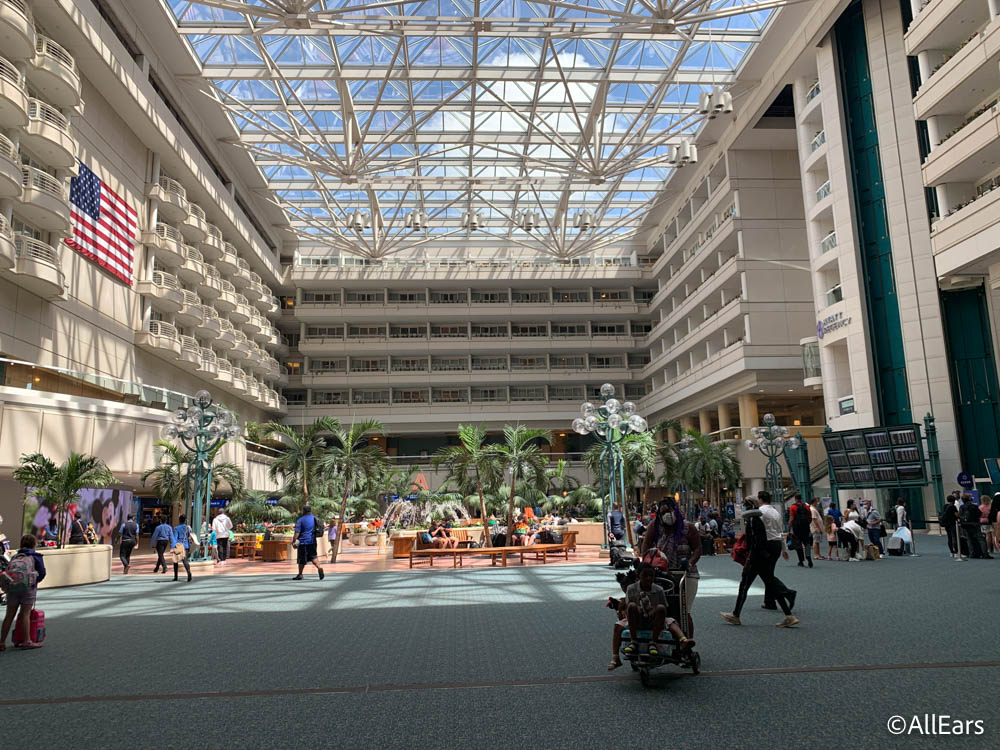
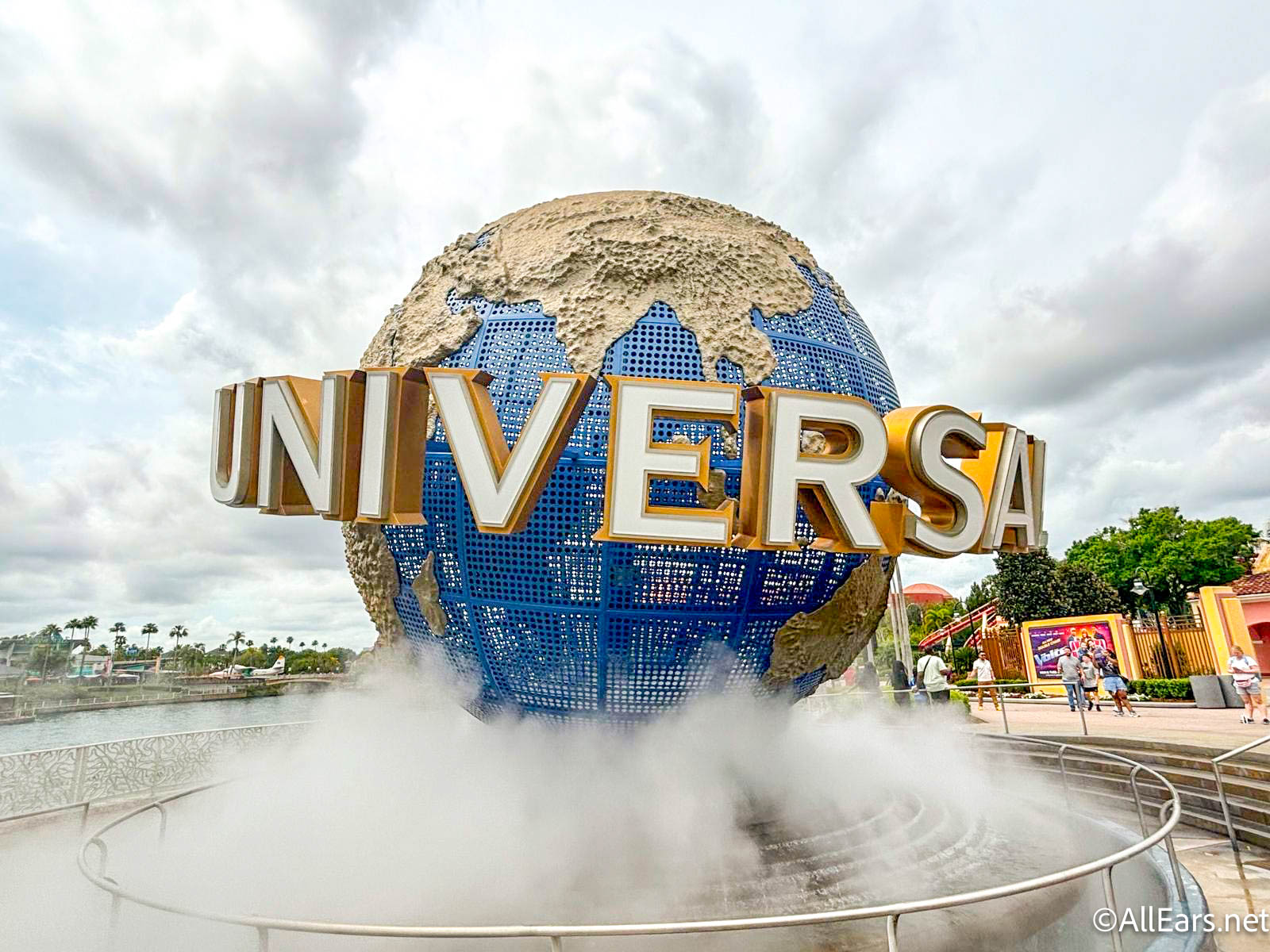
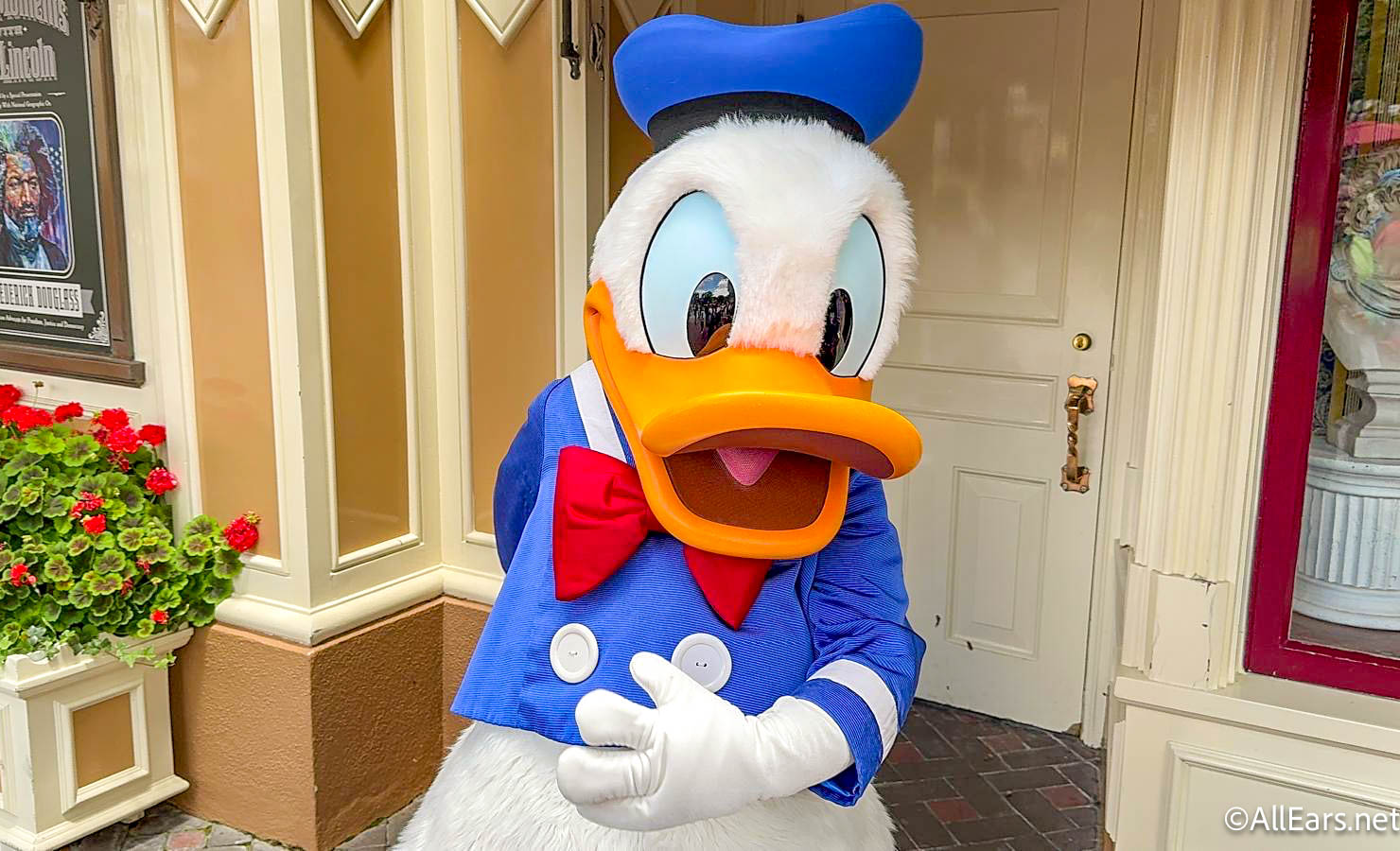

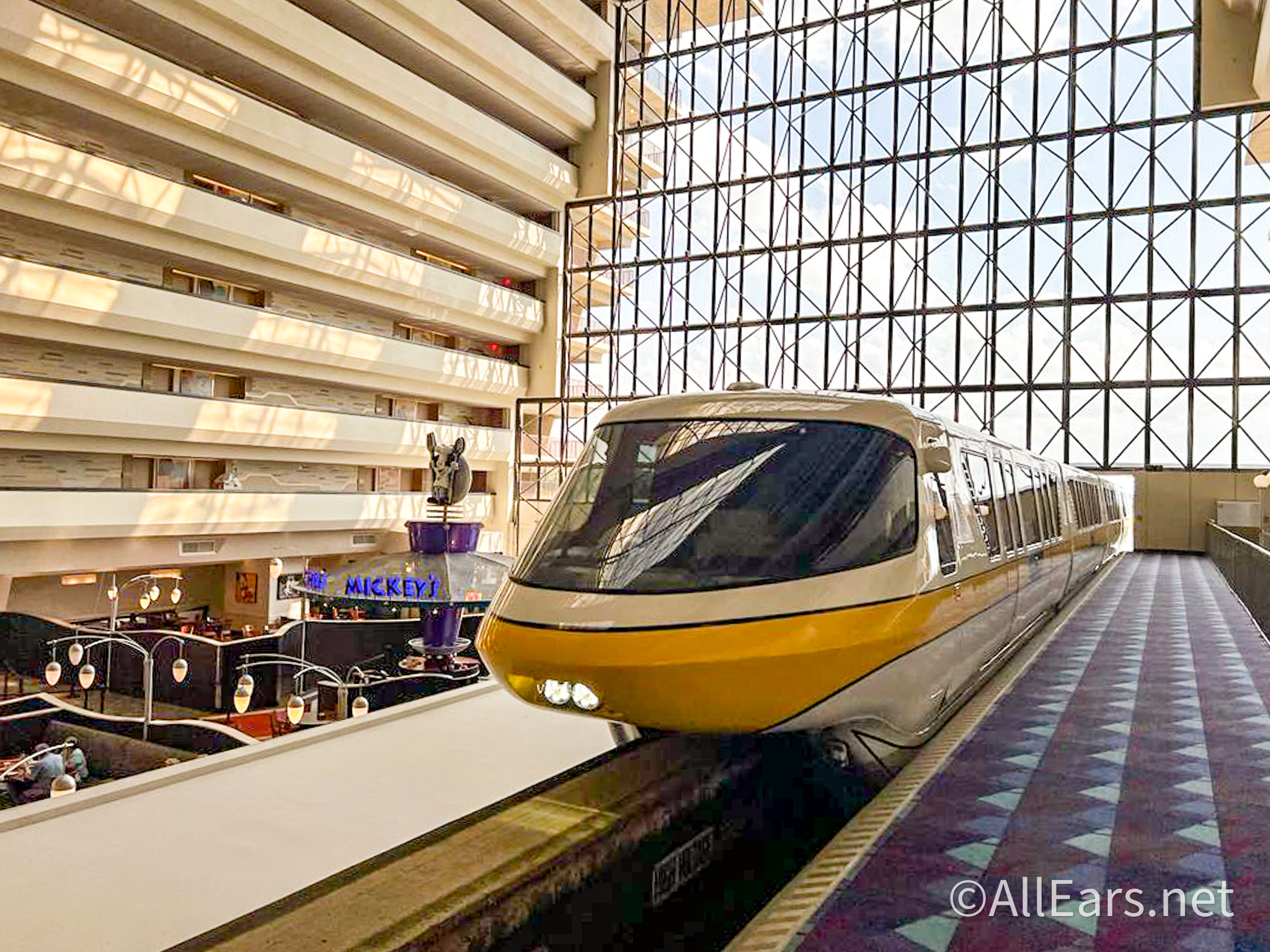

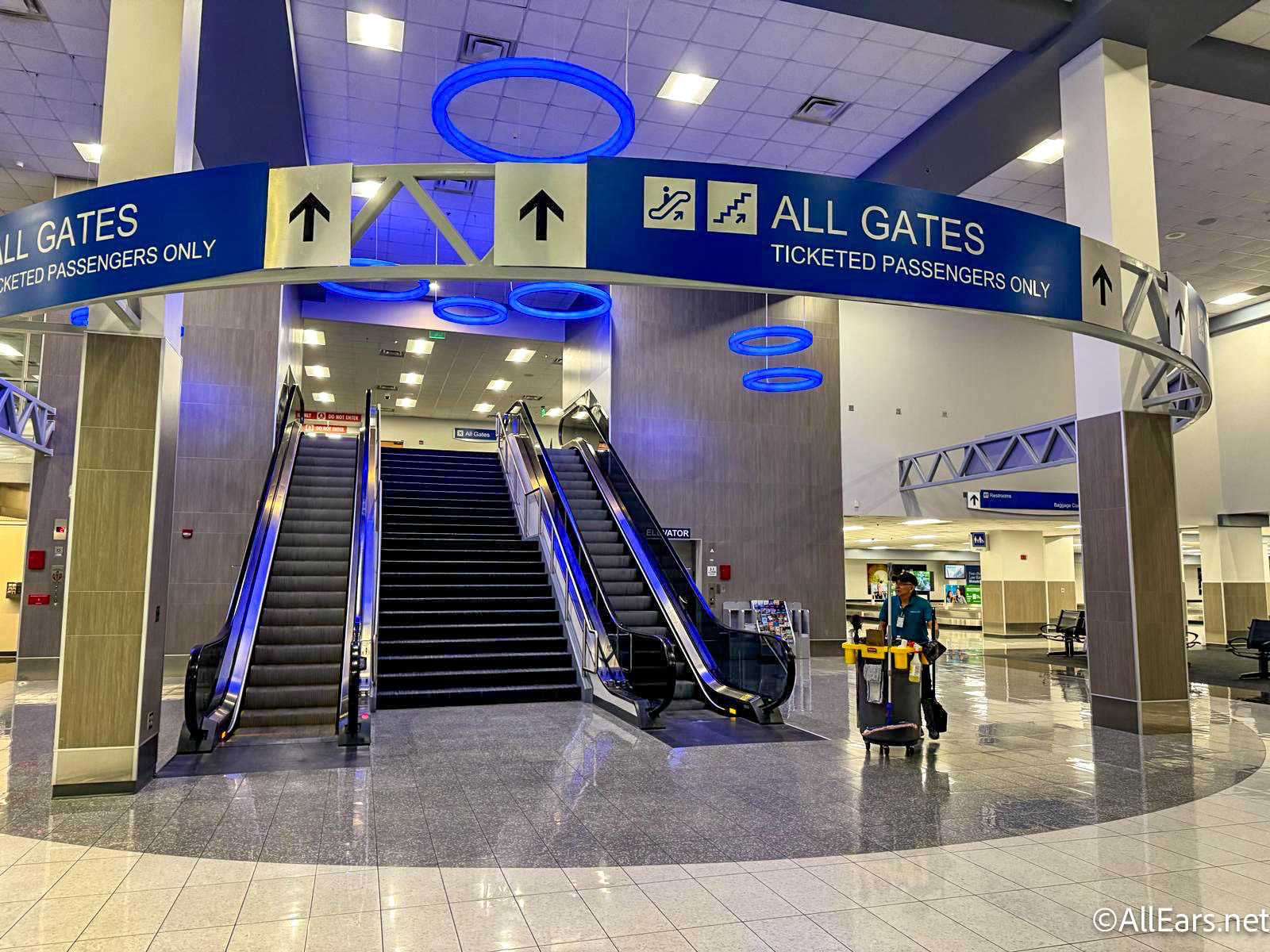


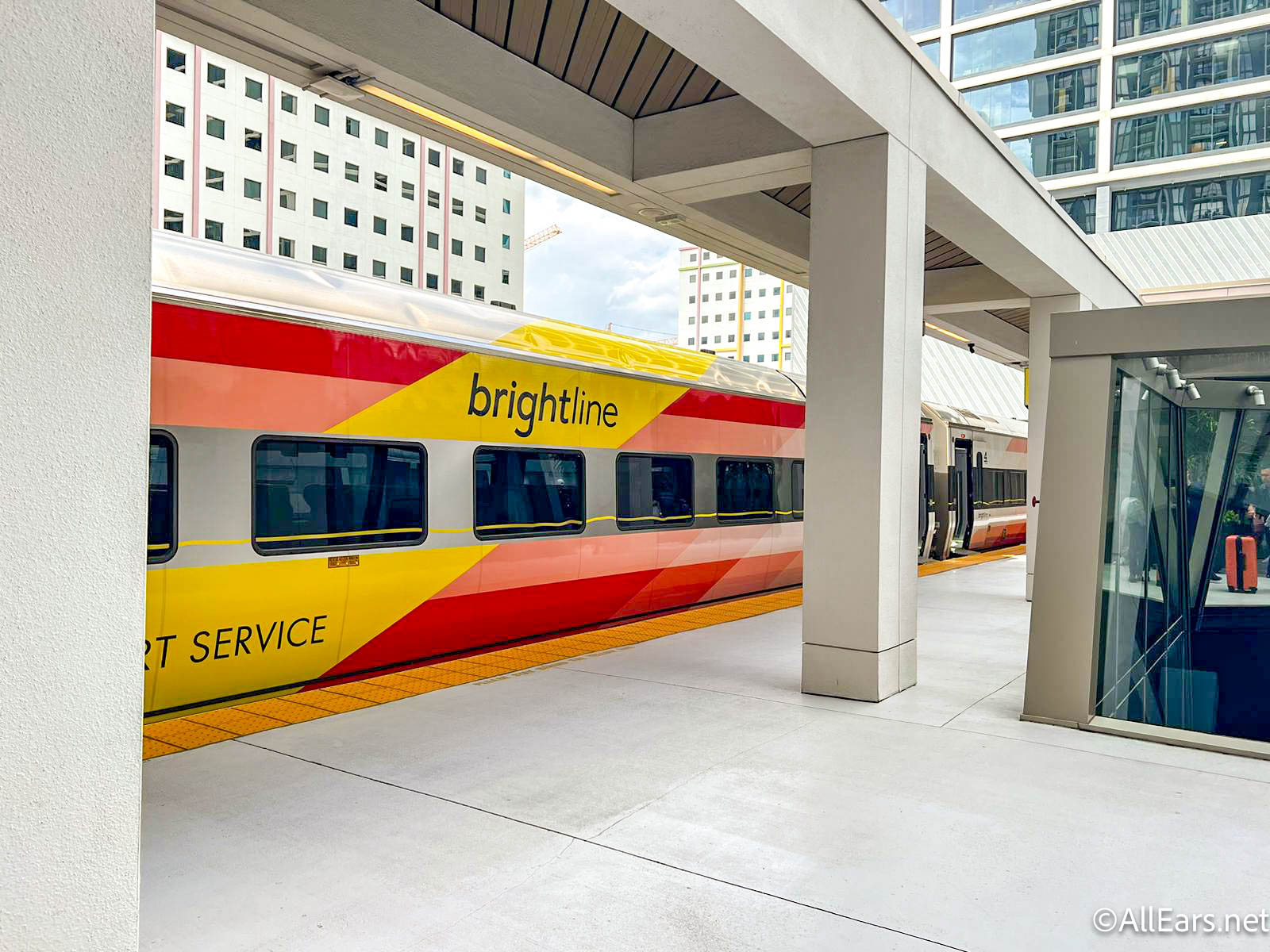



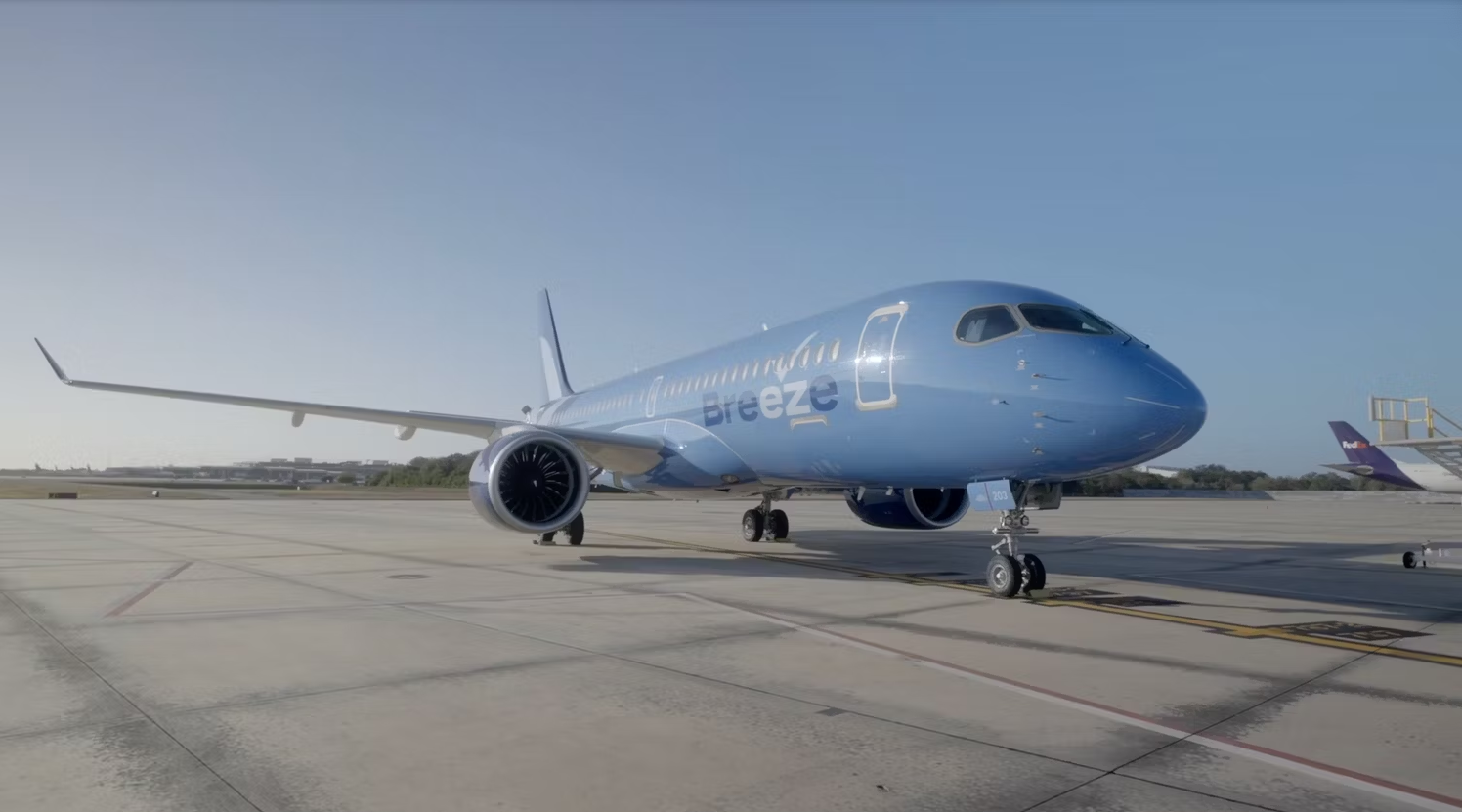



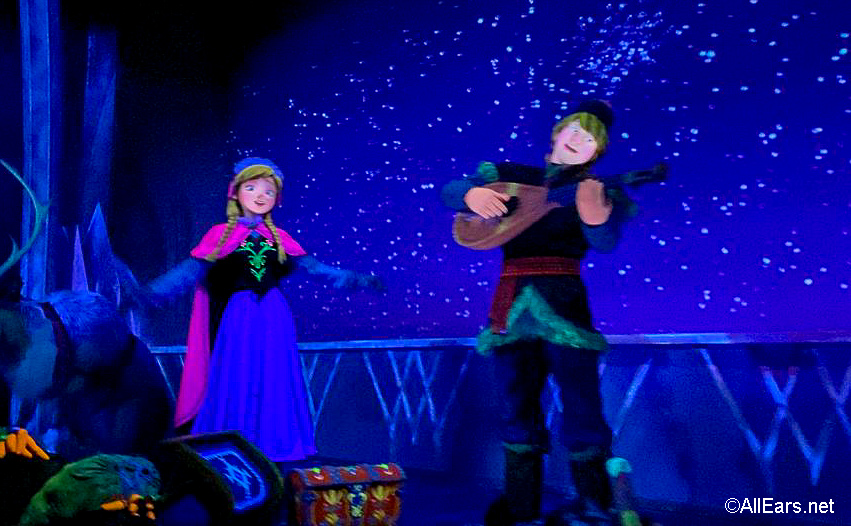

Trending Now
How did the 4th of July affect Disney World's wait times?
Grab these LEGO sets before they're gone!
Bad weather has led to hundreds of delays at MCO!
We're rounding up the BEST ride hacks for your visit to Universal Orlando!
There's a NEW Donald Duck Loungefly collection online you've gotta see!
Disney is changing how you dine at the parks!
Staying at one of the Magic Kingdom monorail resorts, Disney’s Grand Floridian, Disney’s Polynesian Village,...
Amazon has Loungeflys on sale as part of Prime Day!
Here's what you've gotta know about Disney World's "Other" Airport!
Amazon is clearing out the Disney vault!
We asked our resident Disney adults which ride at Hollywood Studios they would rope drop...
Brightline Florida is getting one step closer to expanding to Tampa!
We're sharing the worst-reviewed restaurants in Hollywood Studios!
Donald Duck is back in his official meet and greet spot in EPCOT!
Amazon Prime Day is giving us amazing deals on Oura Ring accessories!
A new nonstop flight has been announced for MCO!
Deluxe Resort guests can look forward to this BIG perk at Disney World in 2026!
Are you brave enough to face this scare zone at Halloween Horror Nights this year?
Walmart is recalling thousands of water bottles due to injury.
Eight ride closures hit these two Disney World parks.